Vaishakh Shuddha Dashami
The Hindu has published Irresponsible article on Hindusim on 3rd May 2009. All Hindus should send their views to ‘The Hindu’ against this misleading article on Hindu Dharma and do their duty towards your Dharma. Hindus must force ‘The Hindu’ to apologize to all Hindus for publishing such misleading article.
Here is the Protest Letter sent by A Staunch Hindu to ‘The Hindu’ Magzine :
Source: dynz.net
I am writing this email with great concern about the article titled From Shining India to India was Shining that was published in the Magazine on May 03, 2009. See the article here.
I clearly understand that the whole article is basically against the BJP manifesto and is politically motivated. However, the last point of the article which describes Hindus as non-secular is indeed a matter of great concern.
The notion of the secular was not known to the Hindus, as the secular requires giving priority to the human being irrespective of his/her beliefs. Hindus were concerned with establishing caste and sect.
I believe that such baseless statements about a religion is without any proper understanding of the religion. By making such statements your newspaper has dared to question the principles of a religion that has existed for many centuries. I would like to know if you could provide the source of information like “there were no schools or colleges as we know them today in ancient India”. Of course no religion had schools or colleges like we know today but the gurukul way of education was present in India since time immemorial.
I hope The Hindu will live up to its name by taking necessary action and not inject poison into the minds of the citizens by targeting a particular religion by publishing such articles.
PS: I sent a copy of this to the email id that was mentioned in their contact page but unfortunately the mail bounced.
PPS: Strangely, this article does not have any author and the sub heading says it is the opinion of eminent historians whose names are not mentioned.
Article Written in The Hindu magazine
From ‘India Shining’ to ‘India was Shining’
Murli Manohar Joshi is the Chairperson of the Drafting Committee for the BJP Manifesto, released on April 3, 2009. As Chairperson, he has written the preamble of the Manifesto, supposedly based on historical “facts” about Indian civilisation and culture. Below are excerpts from the preamble (in bold) along with brief comments given to The Hindu by eminent historians.
Indian civilisation is perhaps the most ancient and continuing civilisation of the world. India has a long history and has been recognised by others as a land of great wealth and even greater wisdom. But India has also experienced continued foreign attacks and alien rule for centuries and this has resulted in a loss of pride in India and its remarkable achievements. Indians, particularly educated under the system of education imposed by the Britishers, have lost sight of not only the cultural and civilisational greatness of India, but also of its technological achievements and abounding natural resources.
India is not the most ancient civilisation. Civilisation is generally defined as having city cultures and that would make Egypt, Mesopotamia and China older. Nor is it the only continuous culture since China has a continuous culture that is older.
Every part of the world has been subjected to attacks by aliens and alien rule. In India the aliens were frequently assimilated and incorporated into Indian culture and ceased to be alien.
India lost its pride when it became a British colony and not before that. Colonial domination was more deeply destructive than any other had been before it.
The technological achievements of India had been known to those Indians who were part of these professions. Such achievements never became public knowledge. They were not applied to changing the technologies of Indian society in a major way. This is something Indians learnt through colonial rule.
According to foreigners visiting this country, Indians were regarded as the best agriculturists in the world. Records of these travels from the 4th Century BC till early-19th Century speak volumes about our agricultural abundance which dazzled the world. The Thanjavur (900-1200 AD) inscriptions and Ramnathapuram (1325 AD) inscriptions record 15 to 20 tonnes per hectare production of paddy.
Agricultural abundance varied over time and space. There was no uniform abundance at all times. Joshi quotes inscriptions from Thanjavur but does not say which one. In AD 1054 (the period he speaks of as producing 20 tons per hectare of paddy) there is also a record that the area of Alangudi in Thanjavur Dt. suffered severe famine, so severe that even the state could not help the people and they finally went to the temple and sold their land to the temple treasury to get money to buy food from elsewhere. [M.E.A.R. 1899-1900, 20]
Famine was common and is mentioned in Indian texts. We do not have to go looking for certificates of merit from foreign visitors. References are made to anavrishti and ativrishti and locusts as the cause. Famine is referred to in the Ramayana [1.8.12 ff] and the Mahabharata [12.139] and in the latter it led to people eating all kinds of unsavoury things. The frequency of references to the 12-year famine is found in many texts. Manu in his Dharma-shastra states that in times of famine social codes can be dispensed with. [102 ff] The Jatakas refer to famines. [1.75, etc;]
It has been established beyond doubt by the several reports on education at the end of the 18th Century and the writings of Indian scholars that not only did India have a functioning indigenous educational system but that it actually compared more than favourably with the system obtaining in England at the time in respect of the number of schools and colleges proportionate to the population, the number of students in schools and colleges, the diligence as well as the intelligence of the students, the quality of the teachers and the financial support provided from private and public sources.
Contrary to the then prevailing opinion, those attending school and college included an impressive percentage of lower caste students, Muslims and girls.
There were no schools or colleges as we know them today in ancient India. Upper caste children were educated in mathas, agraharas and sometimes monasteries. Children following a profession were apprentices in that profession. Lower castes and women were not educated generally. In Sanskrit plays they are the ones who speak the vernacular language Prakrit whilst the upper caste, educated persons speak Sanskrit.
Old British documents established that India was far advanced in the technical and educational fields than Britain of 18th and early-19th Century. Its agriculture technically and productively was far superior; it produced a much higher grade of iron and steel. The Iron Pillar at Mehrauli in Delhi has withstood the ravages of time for 1,500 years or more without any sign of rusting or decay.
The iron-pillar at the Qutab has rusted but the rust cannot be seen as it is in the socket at the top.
Astronomy, mathematics and medicine were at a premium from the Seventh century onwards when there was close interaction between scholars from Alexandria, Baghdad, India and China.
India knew plastic surgery, practised it for centuries and, in fact, it has become the basis of modern plastic surgery. India also practised the system of inoculation against small pox centuries before the vaccination was discovered by Dr. Edward Jenner.
India had no practice of plastic surgery until modern times. Nor did India know about vaccines.
Fa-Hian, writing about Magadha in 400 AD, has mentioned that a well organised health care system existed in India. According to him, the nobles and householders of this country had founded hospitals within the city to which the poor of all countries, the destitute, the crippled and the diseased may repair.
“They receive every kind of requisite help. Physicians inspect their diseases, and according to their cases, order them food and drink, medicines or decoctions, everything in fact that contributes to their ease. When cured they depart at their ease.”
The Chinese pilgrims visiting India — Fa Hien and Hsuan Tsang — make a brief mention of sick persons being treated by having to fast for seven days and being given some medicine. This was probably the treatment given to sick monks in monasteries. There were no hospitals.
India’s worldview is known to have extended from Bamiyan/ Kandahar to Borobudur/ Indonesia on the one hand, and Sri Lanka to Japan on the other. Imprints of Indian culture are found in some other parts of the world as well.
India’s world view did not extend from Afganistan to Indonesia. Hindus in south India knew nothing about Bamiyan and those in north-western India knew nothing about Borobudur. Nor was there any knowledge of Japan. There was some knowledge of central Asia in the north-west of India, some knowledge of south-east Asia in eastern and southern India and the Cholas had contacts with Canton.
The belief in essential unity of mankind is a unique feature of Hindu thought. The Vedic Rishi had also declared that Ekam Sad Viprah Bahudha Vadanti (truth or reality is one but wise men describe it in different ways). This is essentially a secular thought in the real sense of the term because it accepts that one can follow his own path to reach the ultimate. Hindus are well known for their belief in harmony of religions.
The notion of the secular was not known to the Hindus, as the secular requires giving priority to the human being irrespective of his/her beliefs. Hindus were concerned with establishing caste and sect. Only the Buddhists expounded a view that might be called secular since they emphasised social ethics irrespective of other links. And Buddhists were ousted by Hindus.
A new paradigm is called for, but one that endorses the primacy of the human being, the citizen of India, rather than the Hindu.

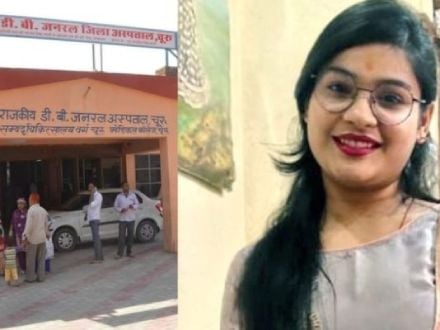 Rajasthan: Woman found hanging at a beauty parlour, Arshad, 3 others booked
Rajasthan: Woman found hanging at a beauty parlour, Arshad, 3 others booked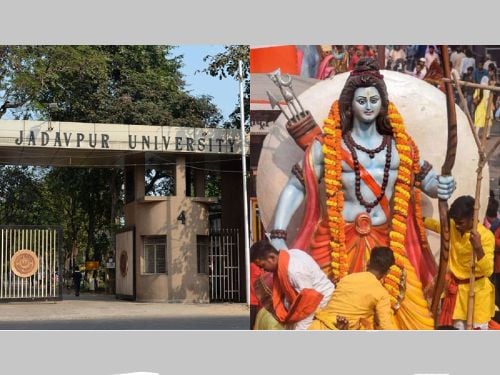 Jadavpur Univ revokes permission to celebrate Ram Navami on campus after granting it
Jadavpur Univ revokes permission to celebrate Ram Navami on campus after granting it Andhra Pradesh: Farooq kills mentally challenged Hindu man for insurance money
Andhra Pradesh: Farooq kills mentally challenged Hindu man for insurance money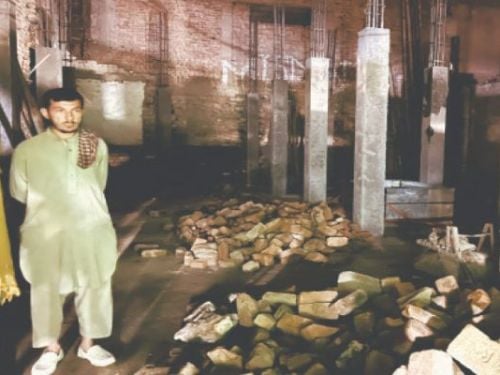 Pakistan: Ancient Hindu temple in Khyber Pakhtunkhwa demolished for commercial complex
Pakistan: Ancient Hindu temple in Khyber Pakhtunkhwa demolished for commercial complex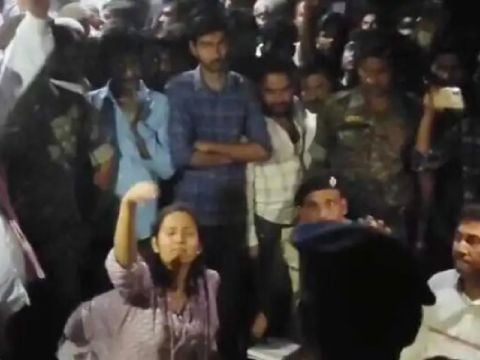 Bihar: Goddess Bhagavati Temple in Araria vandalised and deities damaged
Bihar: Goddess Bhagavati Temple in Araria vandalised and deities damaged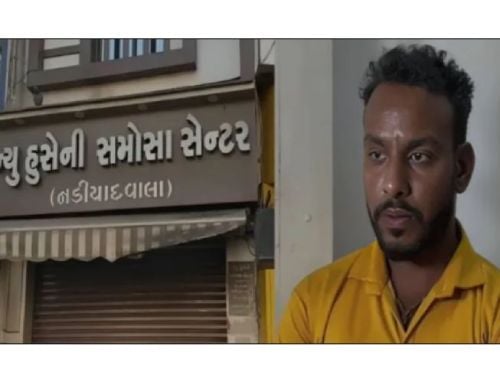 Vadodara: Beef supplier Imran Qureshi arrested in beef-stuffed samosa case
Vadodara: Beef supplier Imran Qureshi arrested in beef-stuffed samosa case